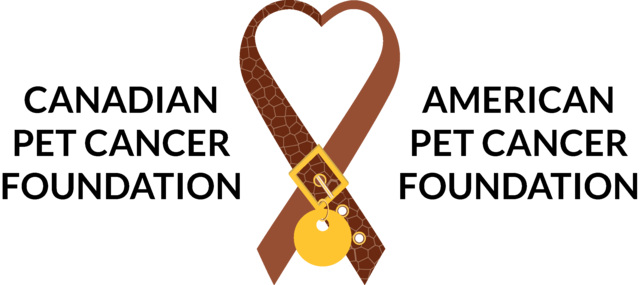- Genes Behind Cancer
- Genetics 101
- What is DNA?
- What are genes?
- What are chromosomes?
- Dominant and recessive allelese explained
- What are sex-linked traits?
- Genomes, genotypes and phenotypes
WHAT ARE CHROMOSOMES?
The centromere gives the chromosome its unique shape and can be used to identify a specific gene location based on the centromere position. At the ends of a chromosome are structures called telomeres that maintain the chromosomes’ functions. Telomeres protect the ends of chromosomes from breaking down or attaching to other chromosomes.
Chromosomes are located inside the cell’s nucleus and each chromosome contains 100’s to 1000’s of genes. When an organism functions correctly, controlled cell division replaces the older and damaged cells with new ones. As cells divide, DNA within the chromosomes gets copied accurately into the new cells. When important pieces of genetic material in a chromosome are modified, duplicated, or missing, it can alter the chromosome’s genetic instructions, including uncontrolled cell division. Modified chromosomes may lead to various diseases, including cancer. For example, reports have shown that chromosome changes can lead to canine lymphomas and feline sarcomas.
Chromosomes come in pairs. Humans have 23 pairs (46 chromosomes), cats have 19 (38 chromosomes), and dogs have 39 (78 chromosomes). One chromosome from the mother and one from the father make up each pair. Each chromosome holds the same spot (like an address) for a gene that may have different forms, called alleles. For example, if a gene is for an eye color trait, the gene from the mom might be for a different color than the gene from the dad. However, both will be at the same spot on each of their chromosomes.
As the understanding of chromosomes improves, so can the diagnosis and treatment of various pet diseases, including cancer. By appreciating that cancer results from abnormal cell changes, like chromosomal changes, you can understand your pet’s risk and prepare for many happy tomorrows with your furry friend.

The Pet Cancer Foundation’s Website Editorial team is comprised of veterinarians, veterinary oncologists, and veterinary technicians, as well as scientific writers and editors who have attained their PhD’s in the life sciences, along with general editors and research assistants. All content found in this section goes through an extensive process with multiple review stages, to ensure this extended resource provides pet families with the most up-to-date information publicly available.
The team listing of those contributing to the information on this page is here:
Keep Your Pets Healthy Editorial Team
Last Updated: October 30, 2022
The Pet Cancer Foundation’s medical resource for pet owners is protected by copyright.
For reprint requests, please see our Content Usage Policy.

The Pet Cancer Foundation’s Medical Illustration team is comprised of medical illustration specialists and graphic designers that work in consultation with our team of experts to create the medical art found throughout our website. Though not all medical concepts require the assistance of imagery, when a page does contain a medical illustration, credit to the artist and our medical art director will be noted here.
The Pet Cancer Foundation’s medical imagery is protected by copyright and cannot be used without prior approval that includes a mutually signed licensing agreement. Please review our Content Usage Policy.
The following sources were referenced to write the content on this page:
Alberts, B, Johnson, A, Lewis, J, Raff, M, Roberts, K, & Walter, P 2002, Molecular Biology of the Cell, 4 edn, Garland Science, New York.
Brenn, M, Langford, CF, Carter, CP, Holmes, NG, Dickens, HF, Thomas, R, Suter, N, Ryder, EJ, Pope, M & Binns, MM 1999, ‘FISH mapping and identification of canine chromosomes’, J Hered, vol. 90, no. 1, pp. 27-30.
Devitt, JJ, Maranon, DG, Erhart, EJ, Bachand, AM, Lana, SE & LaRue SM 2009, ‘Correlations between numerical chromosomal aberrations in the tumor and peripheral blood in canine lymphoma’, Cytogenet Gemone Res, vol. 124, no. 1, pp. 12-18.
Lyon, LA 2012, ‘The feline genome and clinical implications’, The Cat, pp. 1263-1269.
Maser, RS, & DePinho, RA 2002, ‘Connecting chromosomes, crisis, and cancer’, Science, vol. 297, no. 5581, pp.565-569.
Theisen, A & Shaffer, LG 2010, ‘Disorders caused by chromosome abnormalities’, Appl Clin Genet, vol. 3, pp. 159-174.
Thomas, R, Smith, KC, Ostrander, EA, Galibert, F & Breen M. 2003, ‘Chromosome aberrations in canine multicentric lymphomas detected with comparative genomic hybridisation and a panel of single locus probes’, Br J Cancer, vol. 89, no. 8, pp. 1530-1537.
Thomas R, Valli, VE, Ellis, P, Bell, J, Karlsson, EK, Cullen, J, Lindblad-Toh, K, Langford, CF & Breen M 2009, ‘Microarray-based cytogenetic profiling reveals recurrent and subtype-associated genomic copy number aberrations in feline sarcomas’, Chromosome Res, vol. 17, no. 8, pp. 987-1000.
The Pet Cancer Foundation’s medical resource for pet owners is protected by copyright.
For reprint requests, please see our Content Usage Policy.
